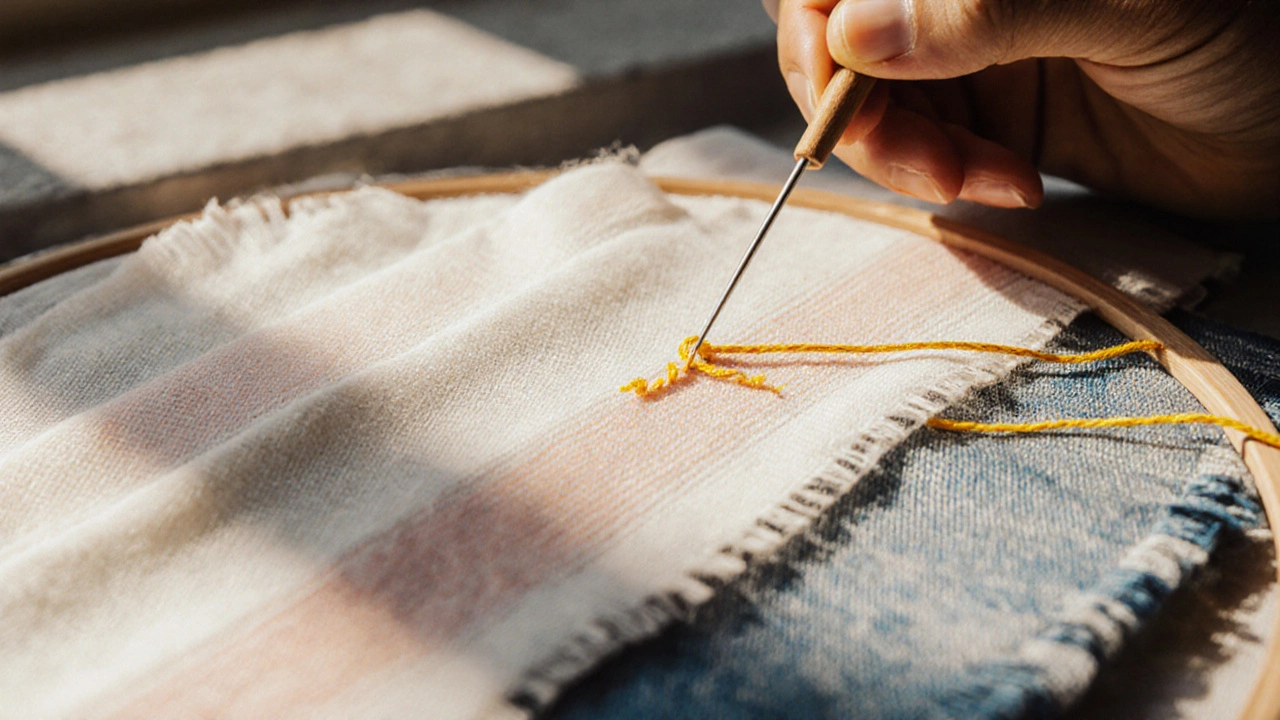
Discover what kantha fabric is, its cotton roots, hand‑embroidered stitch, typical uses, care tips, and how to spot authentic pieces.
When you hear Kantha stitching, a simple running‑stitch quilting style that originated in rural Bengal and uses old cloth layers. Also known as Kantha embroidery, it turns worn sarees and shirts into cozy blankets or decorative tops. Kantha stitching encompasses layered quilting, requires a basic running stitch, and often draws inspiration from Sashiko, the Japanese stitch that shares a love for geometric patterns.
While Sashiko focuses on white‑on‑white reinforcement stitching, Kantha celebrates color, texture, and story. Both traditions rely on repetition, but Kantha adds embroidered motifs that reflect daily life—flowers, birds, or household scenes. This overlap shows how embroidery covers a wide range of needlework from decorative hand‑stitching to functional quilting acts as a bridge between cultures. The handloom fabric that forms the base of a Kantha piece is another key player; the woven material gives the stitch its sturdy yet soft feel, letting artisans turn a faded shirt into a treasured throw. In short, Kantha stitching links embroidery, handloom textiles, and the broader world of traditional crafts.
For anyone curious about DIY projects, the tool kit is minimal: a needle, cotton thread, and two or three layers of fabric. Because the stitch is straightforward, beginners can start with a small square and gradually expand to quilts, tops, or even bags. Modern designers have taken the basic Kantha stitching pattern and mixed it with contemporary cuts—think crop tops made from repurposed denim or wall hangings that blend Indian motifs with minimalist aesthetics. The technique also plays well with other crafts; a hand‑made jewelry maker might stitch a fabric pouch using Kantha to store delicate pieces, combining textile art with accessory design.
The appeal of Kantha goes beyond its look. Using recycled clothing makes each piece sustainable, and the visible stitch lines tell a story of reuse and care. In many Indian households, a Kantha quilt is a family heirloom passed down through generations, each layer adding a memory. This cultural weight means the stitch is often featured in wedding décor, festive gifting, and regional festivals where artisans showcase their skill. As sustainability trends grow worldwide, designers are turning to Kantha as an eco‑friendly alternative to fast‑fashion textiles, proving that an old‑world technique can meet new‑world demand.
Below you’ll find articles that unpack everything from the origins of Kantha stitching to practical guides for creating your own pieces. Whether you’re after a quick craft idea or a deep dive into textile history, the collection gives you solid insight and ready‑to‑use tips.

Discover what kantha fabric is, its cotton roots, hand‑embroidered stitch, typical uses, care tips, and how to spot authentic pieces.